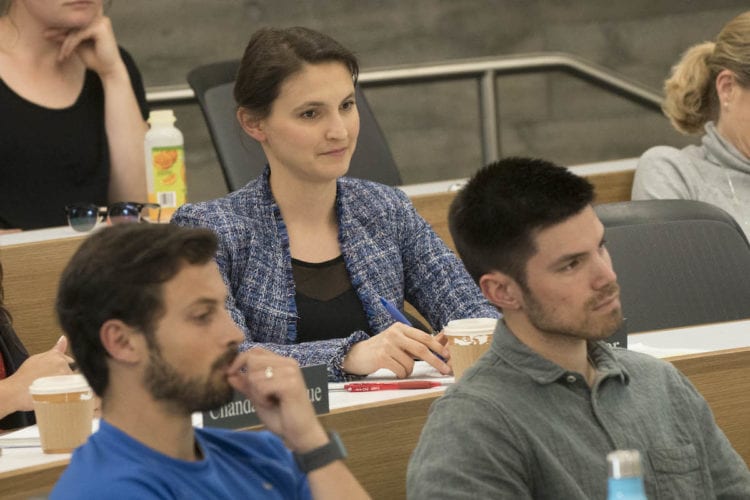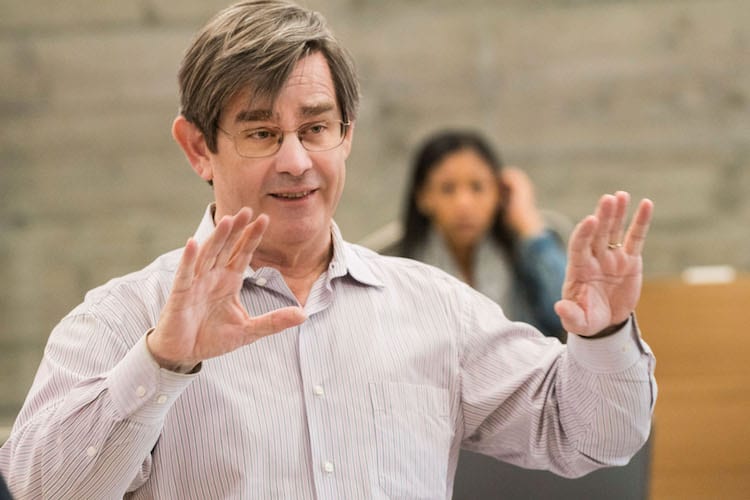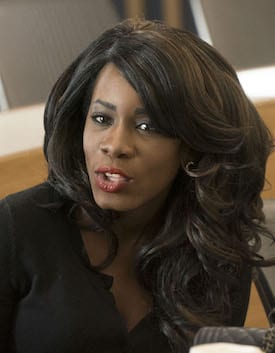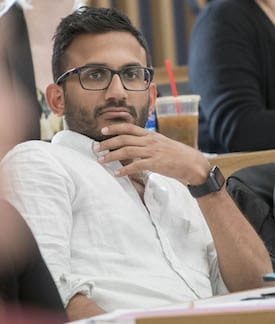
Classified articles spotlight some of the more powerful lessons being taught in classrooms around Haas.
When Neil Armstrong became the first human to walk on the moon in 1969, it was the culmination of the Mercury, Gemini, and Apollo space programs that President Kennedy had laid out in a speech eight years earlier.
“NASA ultimately achieved the mission,” said Adj. Prof. Henry Chesbrough, who directs the Garwood Center for Corporate Innovation and is known as the father of “Open Innovation.” “This became the first instance of a real moonshot.”
Chesbrough used the example to kick of his new spring course called “Organizational Moonshots”— named in honor of the projects that address huge problems, propose radical solutions, and use breakthrough technologies. (Examples of moonshots at Google include Google Glass and the driverless car.)

Betting on big, bold ideas
The course evolved out of a conversation between Chesbrough and Thomas Kalil, former deputy director for the White House Office of Science and Technology Policy and the former special assistant to UC Berkeley’s Chancellor on Science & Technology. The two agreed that the U.S., overall, isn’t betting big on bold ideas any more.

“I wanted students to be aware that there are alternatives to the highly-incremental, very short-term approach to innovation that I’ve observed in corporate America,” says Chesbrough. “Moonshots can be done in many different ways and they don’t always require a huge bureaucratic organization behind you”
Signing up for the class was a no-brainer for Billy Phillips, MBA 19. “If you’re interested in innovation, (Chesbrough) is probably the guy you want to be learning from,” he says.
To bring these ideas to life, Chesbrough invited innovation leaders who inspire him, including Kalil, who lectured students on the National Institute of Health’s BRAIN Initiative, which relies on public and private resources to advance understanding of the human brain; Arati Prabhakar, a former head of DARPA—an arm of the U.S. Department of Defense that used an agile, rotating workforce to develop breakthroughs such as the Internet; and Sylvia Smullin, a physicist who works on early pipeline projects, and Hans Peter Brondmo, general manager of robots, both of GoogleX: The Moonshot Factory.
A polio moonshot
At one recent class the guest was Sara Boettiger, who oversaw investments in polio eradication as former deputy director of the Bill & Melinda Gates Foundation. She outlined the stages of battling polio from around 1921, when her grandfather Franklin D. Roosevelt contracted it, until 1979, when the disease was officially declared eradicated in the U.S.
Today, she said, there remain areas of Africa, Pakistan, and Afghanistan that have resisted vaccinations for cultural, religious and political reasons. “Behavioral change is really hard. It’s really hard to get people to change their belief systems, how they react to new technology, and to trust. There are all these fuzzy pieces.”
Boettiger described various ways the Gates Foundation tried to overcome these challenges and dispel fears of Western interference, by using a novel financing incentive called a loan conversion program. The program loaned money to Japan, which in turn loaned money to Pakistan and Nigeria as formal development assistance.
One of Boettiger’s core messages was that technology alone can’t sustain a moonshot. Sometimes, she added, the hardest part is the tail end, when the momentum that galvanized key players at the start begins to wane yet before the problem is not completely solved.
“There were 22 reported cases of wild polio in the entire world last year,” said Boettiger, who holds a PhD in agricultural and resources economics from Berkeley. “That’s not a high public priority.”
Chandana Haque, EWMBA 18, said Boettiger’s talk about the tail end of the moonshot really brought the message home for her.
“No one talks about that part,” she said. “You always talk about what it takes to do something big, but finishing something big is just as hard. I’ve definitely experienced that in my own work life. You take on a product initiative or the company wants to do something big and change, but completing the last steps is hard, and it takes a lot of conviction.”
Approaching ideas more boldly
Students say they’ve been impressed by Chesbrough’s ability to link the common themes presented by each of the guest speakers.
“He starts with this very ethereal idea and then brings in speakers that make these ideas seem very possible,” Haque said. “You come out of the lecture thinking, ‘Wow, this is totally feasible. Why isn’t everyone thinking this way?'”

As a final project, small teams of students are working with representatives from IBM, Johnson & Johnson, Renault, and Walmart, among others, to design moonshot strategies tailored to their companies.
One project with JLabs (part of Johnson & Johnson) aims to help communities that have endured natural disasters get reconnected to the global economy. Another project would help with Amazon, now the country’s second largest employer, recruit and scale programs that provide work opportunities for the differently abled. A third project, with Gap Inc., would establish a recruiting program to provide more employment opportunities to more low-income people.
Chesbrough said that the course isn’t intended to provide students with a magic ‘toolbox,’ but he hopes that there are aspects of what they learn that will inspire them to approach ideas more boldly throughout their careers.